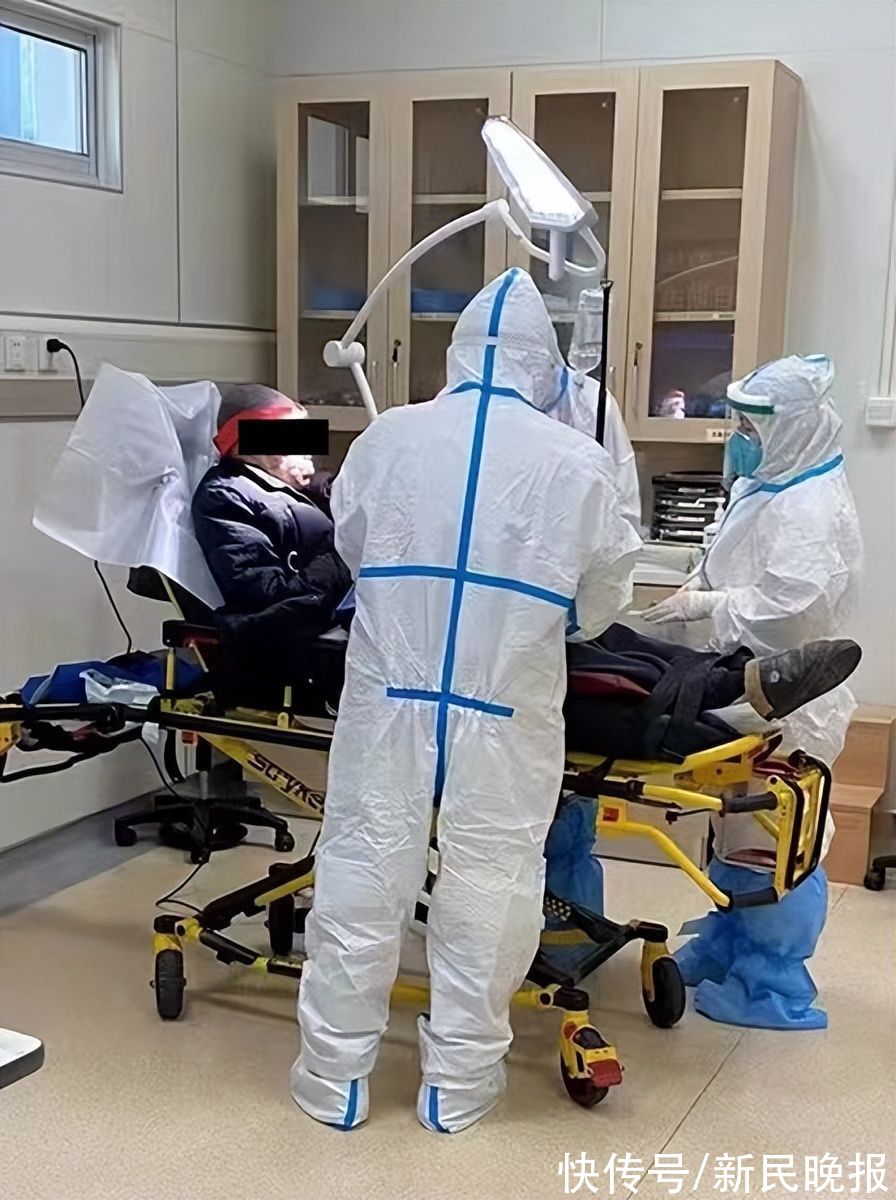
Caption: The doctor came to rescue the bleeding patient by bicycle for an hour. Photo courtesy of the interviewee em>
On April 1, the whistle of the 120 ambulance sounded in the Eye and Ear, Nose and Throat Hospital Affiliated to Fudan University. This is a patient from a community in Fengxian District. Three years ago, he had a recurrence of nasopharyngeal cancer after radiotherapy and chemotherapy. He underwent surgery at the Eye and Ear, Nose and Throat Hospital. On April 1, he developed double nosebleeds with rapid bleeding. Doctor Huang Yibo from the Department of Otolaryngology rushed to the scene immediately to participate in the first aid. Dr. Huang initially considered that the patient might have internal carotid artery rupture and bleeding. Such dangerous bleeding could lead to the death of the patient at any time, and immediately decided to apply nasal packing to the patient to stop the bleeding. Due to the lack of time, it was too late to carry out nucleic acid testing for patients according to routine epidemic prevention requirements. The hospital opened the prevention and control enhanced clinic in time, and doctors wore a full set of protective equipment for first aid, and successfully completed nasal packing for patients.
However, nasal packing can only temporarily stop bleeding. To completely eliminate the hidden danger of internal carotid artery bleeding, angiography and treatment must be done, so as to save the patient’s life. Under the coordination of the Medical Department of the Hospital of Eye, Nose and Throat, the emergency room and the Department of Otolaryngology quickly completed the flow transfer, blood drawing, and nucleic acid sampling in accordance with the emergency plan, and admitted the patients to the prevention and control ward and prepared blood for them. Dr. Zhang Duo, the chief inpatient of the ENT department, accompanied the patients throughout the process and paid attention to their vital signs. The radiology department recalled the MRI technician who was preparing for the shift at home, and immediately performed an enhanced MRI examination. On the same day, Deputy Chief Physician Sun Xicai of the Department of Otolaryngology immediately organized an online consultation in the Department of Rhinology. Vice President Wang Dehui, Vice President Yu Hongmeng, and Director Li Houyong gave online guidance, and cooperated with the Department of Anesthesiology, ICU, Radiology, and Neurosurgery. After urgent consultation, the experts prepared to perform emergency tracheotomy + interventional angiography, and actively prepared for endoscopic hemostasis exploration. Dr. Liu Qiang from the radiology department, Dr. Gu Ye from the neurosurgery department, and Dr. Xue Kai from the rhinology department rushed to the hospital one after another. Among them, Dr. Xue Kai, who lives in Wujiaochang, arrived on a shared bicycle for more than an hour, and immediately joined the rescue without taking a breath. team.
The DSA Hybrid Operating Room has long been ready and ready. After the emergency tracheotomy under local anesthesia, anesthesiologists Li Weixing and Wu Jinhong successfully induced general anesthesia, and they were closely monitored to maintain stable vital signs. Interventional angiography showed that the bleeding point was located in the right internal carotid artery, and internal carotid artery embolization was performed to stop the bleeding. Nasal endoscopic surgical exploration showed obvious blood clot in the right internal carotid artery of the patient. After careful cleaning of the blood clot, the bleeding site was filled, and the massive bleeding was successfully stopped. The next day after the operation, the patient had no bleeding and his vital signs were stable.
Under the hospital’s initiation of the emergency diagnosis and treatment mechanism for epidemic prevention and control, the medical and nursing forces united as one, and the multidisciplinary cooperation of the ENT, radiology, neurosurgery, anesthesiology, ICU, and nursing teams successfully saved the nose. The lives of patients with hemorrhagic pharyngeal cancer.
Xinmin Evening News reporter Zuo Yan Correspondent Wang Jingjing